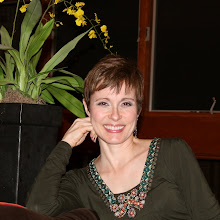This is the way the turkey looked upon arrival.
Next I washed the turkey and trimmed the fat. There was quite a bit of fat around the breast and neck area. I was surprised because I had read that free range turkeys had much less fat than their captive, overbred brethren.

I placed the turkey in a large bucket (used only for brining turkeys) and poured the brine over it. Next it was placed in a large ice chest and filled with ice to keep it cool overnight. I simply do not have enough room in my refrigerator to put it in there, plus the whole turkey should be submerged. I have heard that there are brining bags but I have not looked for one. The turkey should not brine more than 24 hours.
The next day, I rinsed the turkey and discarded the brine. I placed it on a rack in a large roasting pan, filled the cavity with an apple, rosemary sprigs and an onion. The outside was rubbed with canola oil.
Alton Brown recommends roasting the bird for 30 minutes at 500 to brown it. I then turned the turkey breast side down to finish roasting for 2 more hours at 350. I read that roasting it breast side down results in more tender, juicy meat and it seems to work. It was done in 2 1/2 hours and I tented it with foil while we finished the rest of dinner. Gorgeous, isn't it?
The taste test, which is most important? Everyone agreed that it was very tender, juicy and delicious. Was it better than the average turkey? Hard to say. I wish I had a commercially raised turkey side by side to compare. The consensus was that the white meat was better but maybe not that much better considering the price. However, if your conscience bothers you about commercial farming in light of recent revelations of McDonald's eggs, perhaps you'd rather buy more humanely raised meat. I know I would. Anyway, for the rest of Alton Brown's recipe, go to http://www.foodnetwork.com/recipes/alton-brown/good-eats-roast-turkey-recipe/index.html










No comments:
Post a Comment